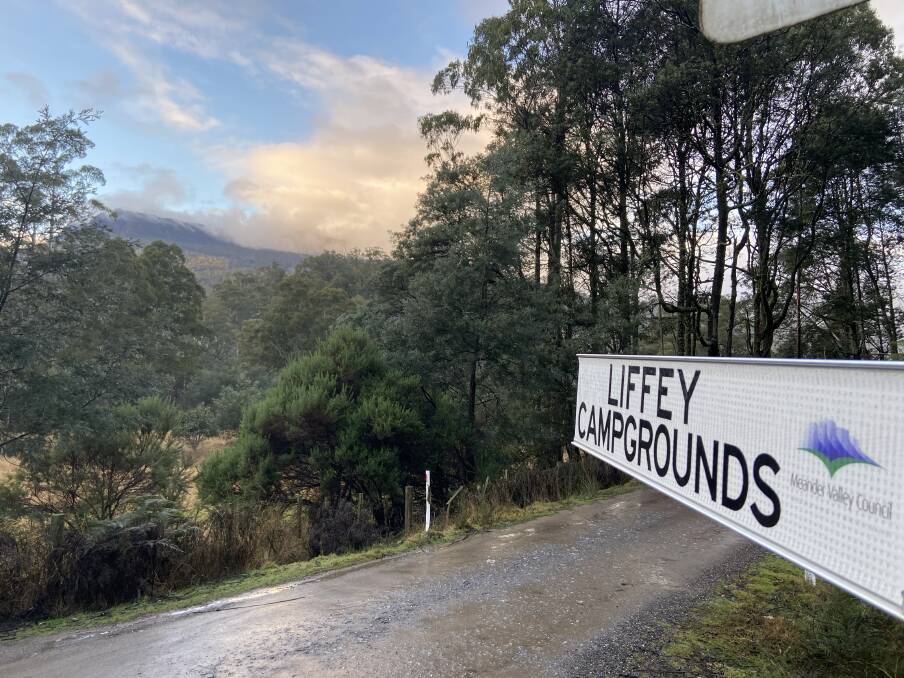
Liffey Falls is considered one of Tasmania's most picturesque sites, attracting thousands of tourists each year.
Subscribe now for unlimited access.
or signup to continue reading
But in 1827 it was in the heart of a conflict zone in a Frontier War over land and resources that led to entire Aboriginal nations, including the Pallittorre, to be wiped out.
Today marked 194 years to the day that between 30 and 120 Pallittorre people were killed at Liffey Falls.
IN OTHER NEWS:
According to historians Lyndall Ryan and Shayne Breen, the conflict was sparked by acts of violence by William Knight - a stockman from Dairy Plains who worked for TC Simpson.
When Tasmanian government agent GA Robinson travelled through Pallittorre Country in September 1830, he was told that Knight was known to "kill Aborigines for sport".
According to Reconciliation Tasmania, the Liffey Falls massacre was a reprisal after someone from the Pallittorre nation killed him.
Led by Corporal William Shiner, he and five of his men waited at the edge of the forest and when sun rose, they attacked.
Today, Liffey Falls is one of seven conflict sites in the Meander Valley.
However, there are no memorials to be found at any of them.
On Thursday Reconciliation Tasmania member Jason Macleod led a small ceremony of remembrance at the lower Liffey Falls campground.
At a place where pain still lingers for many members of the Tasmanian Aboriginal community, he said it was just part of a long journey towards acknowledging past wrongs, in an effort to chart a new future.
"This is part of our story and history," he said.
"When we remember together, we have the chance to strengthen those relationships and actually embrace some of the culture and learnings and knowledge of the Tasmanian Aboriginal community.
"That's why commemorations like this are so important. It's the start to building some momentum around remembering what happened."
Thursday marked the second known commemoration held at Liffey Falls this year, with a smoking and truth-telling ceremony also held on January 26.
Organised by members of the pakana/Tasmanian Aboriginal Community, Reconciliation Tasmania and Tasmanian Quakers, Mr Macleod said many people remained unaware of the area's dark history.
"When I tell people about Liffey Falls, and that between 30 and 120 people were massacred by a colonial police force, they are shocked. People don't know," he said.
"Then when I say 'that's actually one of seven conflict sites, just in the Meander Valley alone' - people are doubly shocked.
"There are no signs, no crosses, no memorials at any of those sites and it wasn't just a one-sided conflict.
"There was active resistance by Tasmanian Aboriginal communities across the state as they were fighting back to protect their land.
"It's a story of resistance, but it's also a story of survival as well. It's a story of ongoing connection to country."
During colonisation, an estimated tens of thousands of Aboriginal people were killed through violence or introduced disease.
Mr Macleod said he had observed growing engagement within the community around the Frontier Wars, but said there was still a very long way to go.
"There are more community conversations about the Frontier Wars now," he said.
"Truth-telling is also a part of the Uluru Statement of the Heart. The statement charts a path towards healing and justice for the nation.
"One day in the not-too-distant future there will be a memorial at Liffey Falls and every conflict site in Tasmania."
Our journalists work hard to provide local, up-to-date news to the community. This is how you can continue to access our trusted content:
- Bookmark www.examiner.com.au
- Make sure you are signed up for our breaking and regular headlines newsletters
- Follow us on Twitter: @examineronline
- Follow us on Instagram: @examineronline
- Follow us on Google News: The Examiner














